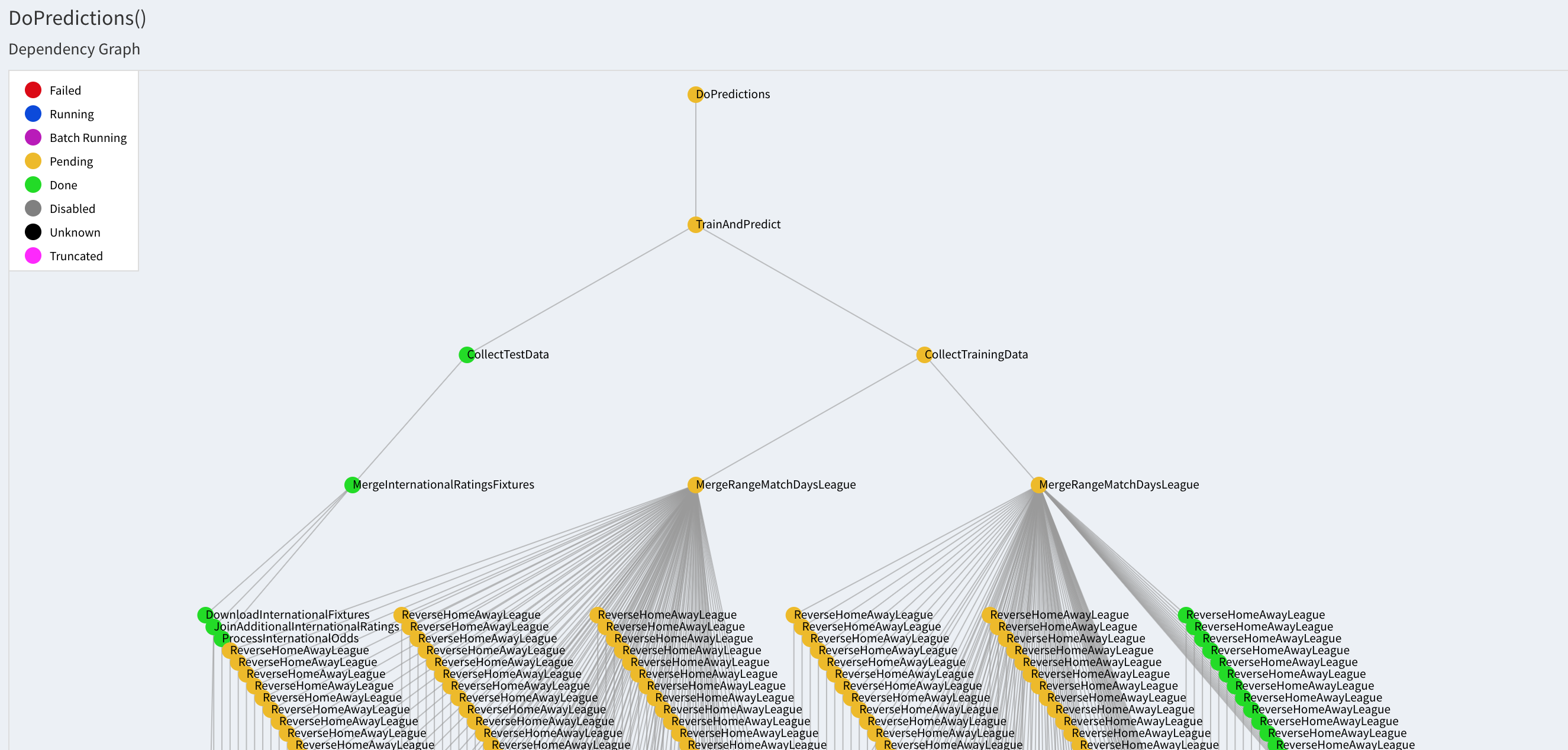Test kafka clients with Docker
TL;DR: Use pytest-docker to create a test fixture that starts a Kafka container.
Problem: I want to test my Kafka client, but I don't have a Kafka cluster
At work, we need to consume and produce messages to some queue. And one of the tools available already is Kafka.
Before integrating with the existing Kafka cluster, I want to test my client code. I want to ensure that it can consume and produce messages correctly.
I have an existing BaseQueueService class like this:
class BaseQueueService(ABC):
@abstractmethod
def publish(self, message: str) -> None:
pass
@abstractmethod
def consume(self) -> str | None:
pass
with existing implementations for Azure Service Bus and an InMemoryQueue for testing business logic.
So I want to create a KafkaQueueService class that implements this interface. And I want to test it, but I don't have a Kafka cluster available.
Solution: Use docker to start a Kafka container for testing
I can use pytest-docker to create a test fixture that starts a Kafka container. This way, I can test my KafkaQueueService class without needing a Kafka cluster.
This is how I did it:
A docker-compose.yml file to start a Kafka container:
services:
zookeeper:
image: 'confluentinc/cp-zookeeper:latest'
environment:
ZOOKEEPER_CLIENT_PORT: 2181
ZOOKEEPER_TICK_TIME: 2000
ports:
- "2181:2181"
kafka:
image: 'confluentinc/cp-kafka:latest'
depends_on:
- zookeeper
environment:
KAFKA_BROKER_ID: 1
KAFKA_ZOOKEEPER_CONNECT: zookeeper:2181
KAFKA_ADVERTISED_LISTENERS: PLAINTEXT://kafka:29092,PLAINTEXT_HOST://localhost:9092
KAFKA_OFFSETS_TOPIC_REPLICATION_FACTOR: 1
KAFKA_LISTENER_SECURITY_PROTOCOL_MAP: PLAINTEXT:PLAINTEXT,PLAINTEXT_HOST:PLAINTEXT
ports:
- "9092:9092"
expose:
- "29092"
init-kafka:
image: 'confluentinc/cp-kafka:latest'
depends_on:
- kafka
entrypoint: [ '/bin/sh', '-c' ]
command: |
"
# blocks until kafka is reachable
kafka-topics --bootstrap-server kafka:29092 --list
echo -e 'Creating kafka topics'
kafka-topics --bootstrap-server kafka:29092 --create --if-not-exists --topic testtopic --replication-factor 1 --partitions 1
kafka-topics --bootstrap-server kafka:29092 --create --if-not-exists --topic input_test_topic --replication-factor 1 --partitions 1
kafka-topics --bootstrap-server kafka:29092 --create --if-not-exists --topic output_test_topic --replication-factor 1 --partitions 1
echo -e 'Successfully created the following topics:'
kafka-topics --bootstrap-server kafka:29092 --list
"
A conftest.py file to create a test fixture that starts the Kafka container:
def check_kafka_ready(required_topics, host="localhost", port=9092):
from confluent_kafka import KafkaException
from confluent_kafka.admin import AdminClient
try:
admin = AdminClient({"bootstrap.servers": f"{host}:{port}"})
topics = admin.list_topics(timeout=5)
# Check if all required topics are present
if all(topic in topics.topics for topic in required_topics):
return True
else:
return False
except KafkaException:
return False
@pytest.fixture(scope="session")
def kafka_url(docker_services):
"""Start kafka service and return the url."""
port = docker_services.port_for("kafka", 9092)
required_topics = ["testtopic", "input_test_topic", "output_test_topic"]
docker_services.wait_until_responsive(
check=lambda: check_kafka_ready(port=port, required_topics=required_topics),
timeout=30.0,
pause=0.1,
)
return f"localhost:{port}"
And finally, a test file to test the KafkaQueueService class:
@pytest.mark.kafka
def test_kafka_queue_can_publish_and_consume(kafka_url):
kafka_queue_service = KafkaQueueService(
broker=kafka_url,
topic="testtopic",
group_id="testgroup",
)
clear_messages_from_queue(kafka_queue_service)
unique_message = "hello" + str(uuid.uuid4())
kafka_queue_service.publish(unique_message)
received_message = kafka_queue_service.consume()
assert received_message == unique_message
Now I can test my KafkaQueueService class without needing a Kafka cluster. This even works on my CI/CD pipeline in Azure DevOps.
NOTE: The docker-services fixture starts ALL the docker services in the docker-compose.yml file.
Bonus: The passing implementation of KafkaQueueService
This passes the test above (and a few other tests I wrote):
from confluent_kafka import Consumer, KafkaError, Producer
class KafkaQueueService(BaseQueueService):
def __init__(self, broker: str, topic: str, group_id: str):
# Configuration for the producer and consumer
self.topic = topic
self.producer: Producer = Producer({"bootstrap.servers": broker})
self.consumer: Consumer = Consumer(
{
"bootstrap.servers": broker,
"group.id": group_id,
"auto.offset.reset": "earliest",
"enable.partition.eof": "true",
}
)
self.consumer.subscribe([self.topic])
def publish(self, message: str) -> None:
"""Publish a message to the Kafka topic."""
logger.debug(f"Publishing message to topic {self.topic}: {message}")
self.producer.produce(self.topic, message.encode("utf-8"))
self.producer.flush()
def consume(self) -> str | None:
"""Consume a single message from the Kafka topic."""
logger.debug(f"Consuming message from topic {self.topic}")
# Get the next message
message = self.consumer.poll(timeout=20)
if message is None:
logger.debug("Consumer poll timeout")
return None
# No new message
if message.error() is not None and message.error().code() == KafkaError._PARTITION_EOF:
logger.debug("No new messages in topic")
return None
# Check for errors
if message.error() is not None:
raise Exception(f"Consumer error: {message.error()}")
self.consumer.commit(message, asynchronous=False)
return message.value().decode("utf-8")
def __repr__(self) -> str:
return f"{self.__class__.__name__}(topic={self.topic})"
